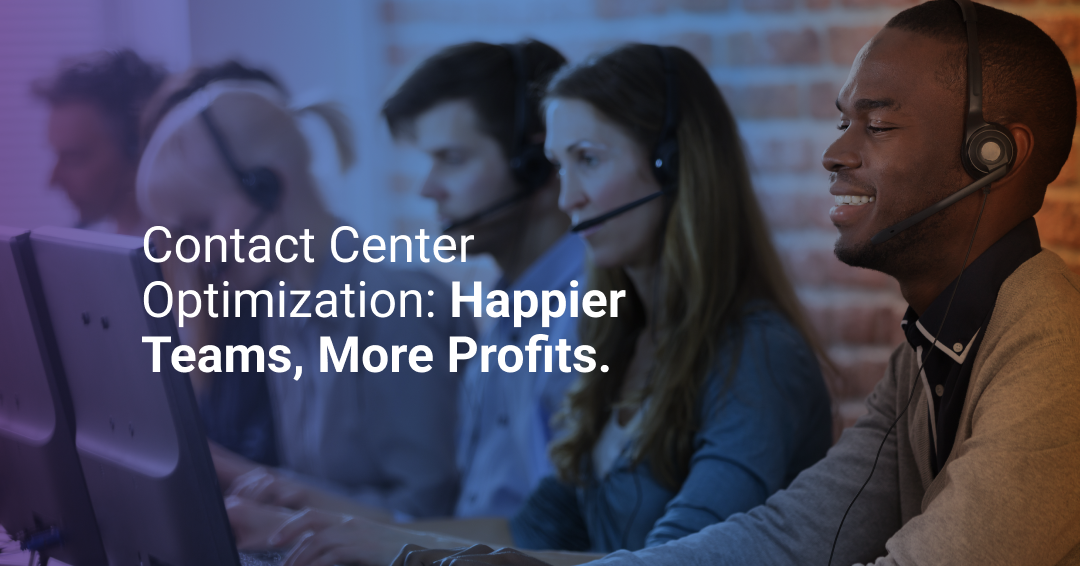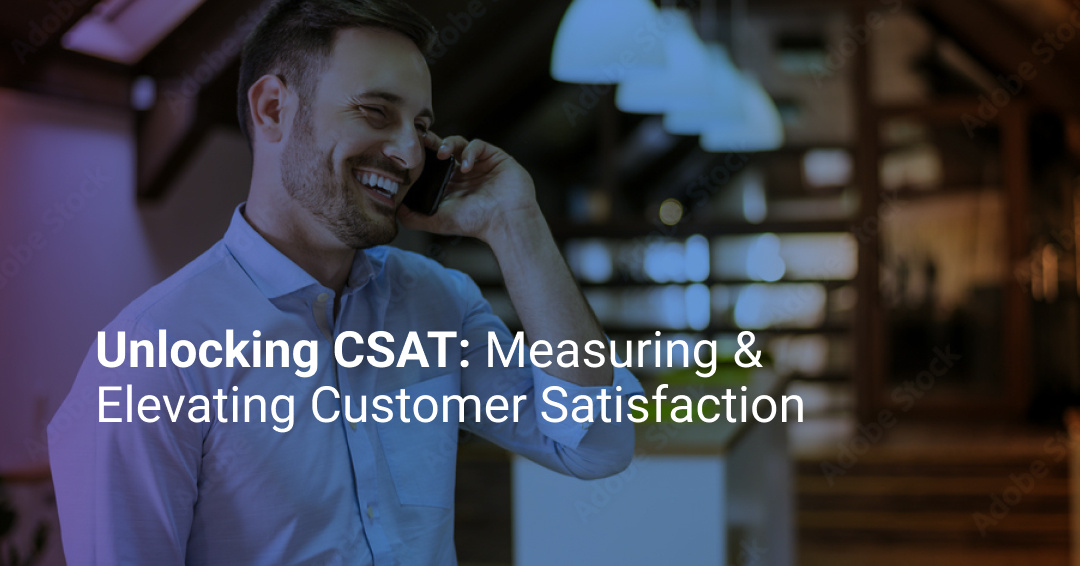12 Call Center Metrics You Should Be Using to Improve CX in 2025
Call center metrics are the most important performance indicators that monitor how effectively your call center is running. This includes anything...

Call centers can work like clockwork and focus on helping customers or be one of the most dysfunctional work environments that directly impact brand perceptions. To prevent the latter scenario, contact center employees must receive the proper training, incentives, processes, and motivation to do their best work.
The happier your contact center workforce is, the better they will be at showing up to every interaction and solving problems.
Workforce optimization refers to managing a contact center as efficiently as possible. To do so, all contact center agents must follow the same standards and training and ultimately perform in ways that match the call center's interests. While there are many ways to do this, it usually comes down to accurately assessing the workload of any given campaign, the number of agents available to handle that campaign, all training provided, and the incentives around key objectives to ensure results are met.
Beyond your workforce, leveraging the power of conversational AI solutions like Mosaicx is also an essential part of WFO. The most effective contact centers have a system that helps customers self-serve most of their enquiries with an intelligent virtual agent (IVA) system that understands their intent and dynamically adapts to solve their issues. As a result, your customer representatives can focus on the calls that matter most to reduce churn, solve complex problems, and do quality work.
You must consider multiple aspects to ensure your call center workforce is doing its best work. Once again, remember that ensuring your teams are fulfilled in their work environment is an important aspect of ensuring a positive customer experience.
Leadership teams in contact centers must be able to determine any campaign's requirements. This includes the number of people required to handle requests, the expertise needed, seasonal demands, historical trends, and more to allocate resources correctly. After that, ensuring that your scheduling processes meet those previously forecasted needs is vital to keep your employees engaged without excessive workloads.
Forecasting and scheduling are perhaps the most important aspects of optimizing your workforce. Stories of call centers overworking their employees are common; they can burn your reputation and increase employee turnover. On the other hand, finding a balance between the amount of work, time, and resources allocated to any campaign can make a difference for your teams and your CX metrics.
Forecasts and a healthy work environment are the first steps to optimizing your workforce. However, beyond that, you must measure performance permanently to ensure that your teams are meeting their key performance indicators. Tracking your agents’ performance against the service level agreements and metrics, such as first contact resolution, helps you identify room for growth, potential issues, and champions that can help you improve the performance of your entire workforce.
Reviews are also an essential part of performance, as is having candid conversations with individuals about their performance. Remember that there is a delicate balance between workload and performance, so an open discussion where you also gather agent feedback can help you improve your contact center.
Monitoring call volumes, agent availability, wait times, and many other factors can help managers adjust their teams to balance workloads and reduce problems. By doing this permanently, you can allocate resources faster, have a dynamic approach in case of an unforeseen spike in call volumes, and ensure customer satisfaction stays positive. Real-time information also helps you pinpoint and fix issues immediately, prioritizing customer experience and helping contact centers perform better.
Working at a call center is not precisely a low-stress work environment. Many calls you would have to handle are stressful, dealing with customers with short tempers looking for quick solutions. A great contact center optimizes its workforce by permanently providing training and development, helping agents prepare for potential scenarios and difficult conversations.
By having more training programs available, your workforce becomes more informed and capable, ultimately handling more requests faster and increasing productivity and efficiency.
As we already mentioned, call centers can be a high-stress workplace. Therefore, you must ensure employees are happy and engaged with their everyday work. While this is not always possible, organizations can build systems that reward employees based on performance, recognize those who go above and beyond, provide adequate training and tools to do great work, and allow employees to find a work-life balance.
Workforce management tools allow managers to understand their employees better, improve their performance, and maintain a positive environment. On top of that, the importance of these tools and more relevant AI advancements in automating processes is massive, reducing the amount of work done by your workforce and ensuring agents focus on meaningful instead of repetitive work.
In tandem with the previous section, optimizing processes with the right tools is critical to optimizing a contact center work environment. The more robust and solid processes, the less room for interpretation, and the easier it is for people to understand what needs to be done to succeed in any particular situation.
Having these processes is paramount when it comes to customer service. Operational gaps may influence not only the contact center’s performance but also the end customer’s satisfaction and, ultimately, your performance as a contact center and your capacity to find clients in the future.
Work-life balance is another aspect that contact centers should consider. Without proper systems, processes, workforce management tools, and management, finding burnout scenarios and disengagement can be pretty standard. Instead, focusing on ensuring your teams feel like their work and contributions matter and providing the right incentives to reward innovation and value-adding ideas can lead your teams to feel better and work better.
While balance is the ideal scenario that is sometimes impossible, the exercise and intention of striving for balance matters the most. Sometimes, predicting a spike in calls may be impossible with specific campaigns. But, whenever possible, contact center leaders must do their best to ensure people are not overwhelmed by the amount of work.
Not all employees at your contact center have the same skills or work experience. Instead of boxing them all into the same tasks and procedures, finding their top skills and connecting them to the correct type of needs for each campaign can exponentially increase your productivity and employee engagement. Many individuals working at contact centers have years of training or experience in other fields, ensuring that you build a culture of curiosity where managers are happy to find what the unique characteristics of their employees are and training to help them connect their skills with end-user needs is where the best work happens.

While most of the benefits of WFO are self-explanatory, the following vital improvements are perhaps essential for managers looking to improve their workforce environment.
Having the right agent on the right call with the right attitude leads to greater productivity. While it’s easy to assume that the number of calls vs. problems solved is the only metric that matters, multiple layers of efficiency and productivity must be considered to optimize a contact center. For example, improved efficiency means having the right conversational AI partner that helps customers solve problems independently. It also means providing agents with the proper training and tools to do their best work.
Ultimately, efficiency and productivity are indicators of prioritizing the well-being of your workforce by using technologies and processes to support their daily activities.
Studies linking happiness and productivity are abundant. Regarding contact centers, one of the client-facing industries, having a happy, empowered workforce is a critical differentiator to help you stand out. The best customer experience is where customers feel heard, their problems are taken care of, and their time and money are recognized and appreciated. Your workforce can do that and more, but without the proper environment, it is difficult to perform well in an environment that can be stressful.
Some contact center leaders think optimizing workforce endeavors is too much of an investment. However, ensuring that your employees are more engaged will decrease employee turnover rates, meaning training costs will decrease while customer and client satisfaction will rise. The equation is quite intuitive. The more you care about the individuals who are out there every day in the trenches solving problems, the more you will be able to solve problems for your partners and end customers.
Reducing costs is only the beginning. With a more optimized workforce, you can also upsell, cross-sell, and find new clients who want a contact center that works well.
We’ve already mentioned that caring for your people translates into caring for your customers. Keeping your best people happy means fewer turnovers, more business development, better CX metrics, and skipping the pain of constantly hiring people who leave every few months for a new opportunity.
Information is power. The more you understand and optimize your workforce, the easier it is to plan accordingly to meet the needs of your employees, partners, and end customers. It’s all a system of understanding, human connection, and truly providing your teams with the best tools and technologies to succeed.
Conversational AI and software tools that can help predict call volumes and reduce the work done by agents can improve WFO processes. By scheduling the correct number of workers for any campaign, you can reduce hold times and improve CX. You can also anticipate peak seasons to hire more temporary employees or find some whitespaces and opportunities to improve performance.
Still unsure about conversational AI and optimizing your workforce processes? Talk to one of our solution specialists and see how the right combination of AI, advanced technology, and human expertise can help you take your CX to the next level and improve employee engagement.

Call center metrics are the most important performance indicators that monitor how effectively your call center is running. This includes anything...

Businesses across industries have changed or evolved over the decades, but one thing that has remained the same is that their growth is pretty much...

Customers have several major expectations from modern businesses, but none is as challenging as them reading your mind to anticipate support you...